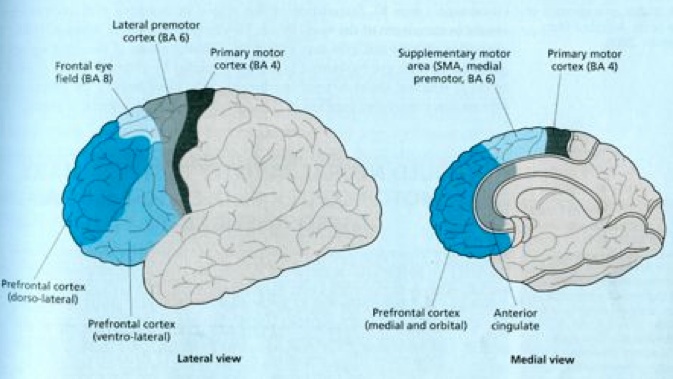
In addition, the RL assists researchers in understanding how behavior is affected when a reward is not received, or when an alternate, such as punishment, is rendered. Together, the two processes comprise a behavior model that reveals a great deal about why people behave in general, but especially when they are motivated to attain a reward and avoid punishment. Moreover, it provides a means of accurately predicting future behavior by demonstrating how behavior algorithms, or scripts, are created and maintained.
Another tool used by researchers to study behavior is known as a, “Functional Magnetic Resonance Imaging (fMRI)” scan. These allows researchers to identify areas of the brain that are activated during the performance of a particular task. For example, a child is given the task of assembling a puzzle with a reward of candy upon successful completion. By conducting an fMRI scan of the child’s brain while they perform the task, researchers try to isolate individual brain functions and their interrelationship in the processing of a rewards-based task.
Two areas of particular interest for researchers of behavior are located in what is known as the, “Pre Frontal Cortex (PFC).” The first is the Dorso Lateral PFC (DL-PFC) and the second is called the Anterior Cingulate Cortex (ACC). These are known to be fundamental to the assessment and formulation of behavior algorithms, and their execution (see Figure 3). fMRI scans of these areas show activity when one engages in rewards-motivated behaviors, such as performing the tasks alluded to previously.

When used in conjunction with one another, the RL and fMRI, can tell researchers a great deal about how voluntary changes to behaviors are motivated, and, more importantly, provides them with insight into the emotional, also known as the “internal state” of a person, at the moment a behavior is expressed[3].
“Dude, you are putting us ALL to sleep. What’s this gotta do with video game violence?”
Everything.
One application of the reinforcement learning model is the study of rewards-based behaviors as expressed in competitive activities, which includes things like sports and other games in which a goal, or reward, is the motivation for playing. These activities are analyzed in the context of the behaviors they promote or elicit. As these behaviors are rewarded, they are re-affirmed, and like the child and the math test, can become part of a new or modified behavioral paradigm.
The following example of how this is accomplished is furnished by the Kyoto University’s, “Integrated Systems Biology Laboratory” website[4],
“…consider a situation where [one learns to] play…chess. [He or she] probably lose[s] the game [initially] because [they are unfamiliar with how to play]. However, as [he or she plays] the game more [often], [they] will obtain a better strategy and finally become [an] expert.”
Accordingly, rewards-based learning in the context of a game like chess suggests the motivation to playing is the reward of establishing oneself as, “an expert,” which is accomplished through repeated trial and error until a successful “strategy” is determined[5]. Part of this process entails a high risk of being defeated repeatedly, at least initially. The player must therefore be willing to endure the negative effects of losing over and over again, until they achieve their goal: the reward of demonstrated expertise.
If we then apply this same logic to other war-based games, like the board game Battleship, we again see the same rewards-based motivations driving the players’ behaviors to accomplish a particular goal, which in this case is winning the game by sinking all of the opponent’s water vessels.
What about video games? Do they, along with chess and Battleship, qualify as competitive, rewards-based activities that can be assessed and analyzed according to the reinforcement learning model? Since both chess and Battleship have video game equivalents, the answer has to be in the affirmative (see Video below).
“Well, what about violent-video games?”
It is here where opinions disagree. According to proponents of the anti-violent video game argument, the playing of violent-video games leads to the development of aggressive and violent behavior, which seems to override any rewards-motivated algorithms that may co-exist. The reason for this, they say, is that violent-video games are only another form of what is known as, “violent media,” which has been proven to cause aggressive behavior in those repeatedly exposed to it.
“Violent media” is defined in the article, EFFECTS OF VIOLENT VIDEO GAMES ON AGGRESSIVE BEHAVIOR, AGGRESSIVE COGNITION, AGGRESSIVE AFFECT, PHYSIOLOGICAL AROUSAL, AND PROSOCIAL BEHAVIOR: A Meta-Analytic Review of the Scientific Literature, as follows:
Violent media are those that depict intentional attempts by individuals to inflict harm on others. An “individual” can be a nonhuman cartoon character, a real person, or anything in between. Thus, traditional Saturday-morning cartoons (e.g., “Mighty Mouse,” “Road Runner”) are filled with violence.
Since violent-video games depict violent acts, they are said to qualify as a genre of “violent media.” In this way, supporters of the anti-violent video game movement in the medical community emphasize a superficial aspect of so-called “violent-video games” while completely ignoring the rewards-based, competitive origin of games.